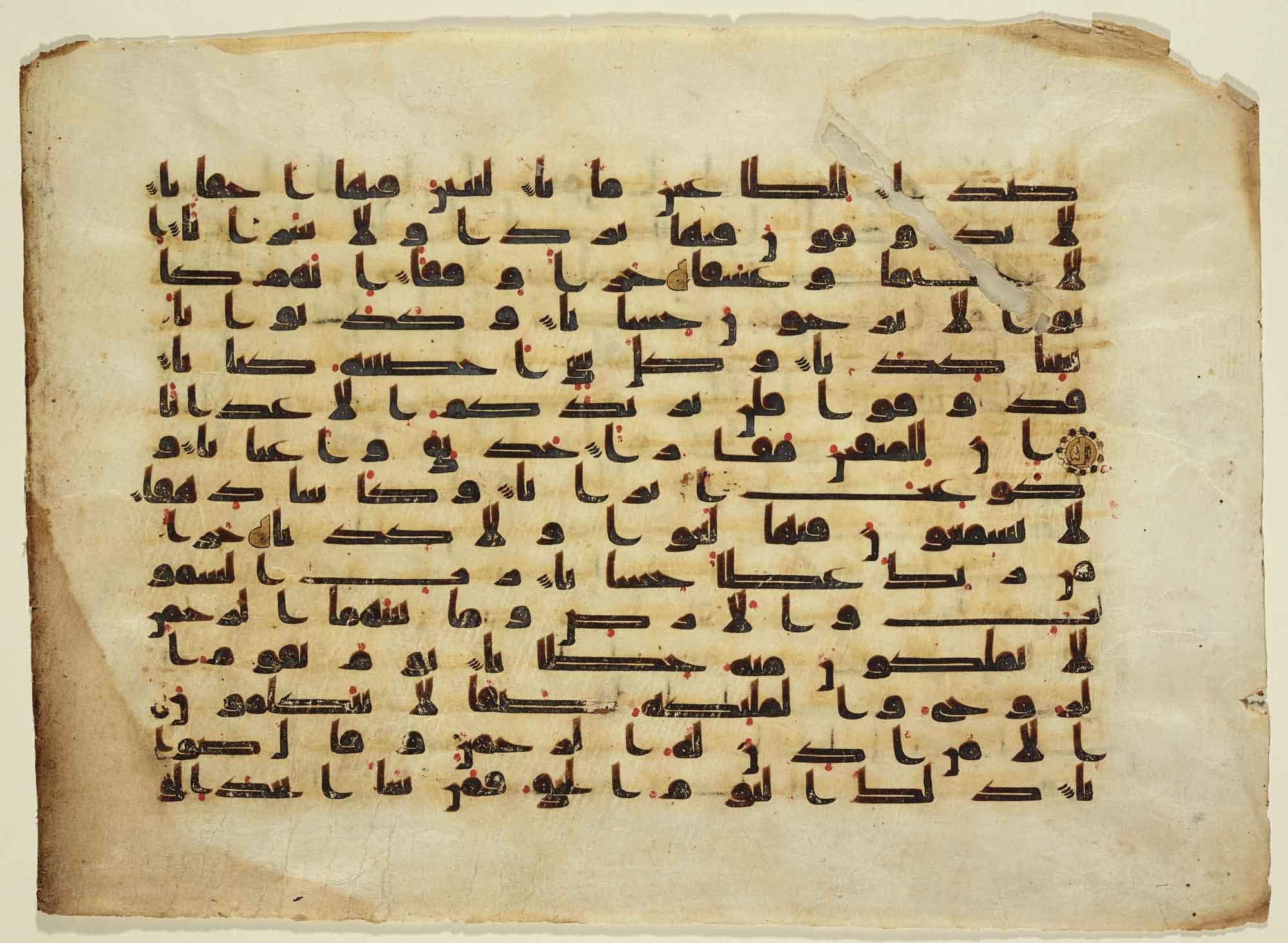Click on the image to zoom
Qur’an Folio (Q78: 1–38)
- Accession Number:AKM238
- Place:Iran or Iraq
- Dimensions:61 x 45.6 cm
- Date:850–900
- Materials and Technique:Ink and gold on parchment
Muslims discovered the secret of papermaking after the Battle of Talas in 751 when the Abbasids (750–1258), ruling from Baghdad in present-day Iraq, and the Tang dynasty (618–907), ruling from Xi’an in China, battled for control of Central Asia. Their first use of paper, however, was reserved for administrative documents. Until the end of the tenth century, Qur’ans, like this ninth-century folio, were still being copied on parchment, an animal skin that is stretched, limed, and scraped to produce a uniform writing surface. The fifteen lines of Kufic script in this folio are interrupted by four oblique strokes that indicate the end of each verse, with a letter marker filled with gold after each fifth verse. The diacritical marks are indicated with red ink dots that add a pleasant decorative element to the uniform black ink of the text.
Note: This online resource is reviewed and updated on an ongoing basis. We are committed to improving this information and will revise and update knowledge about this object as it becomes available.


